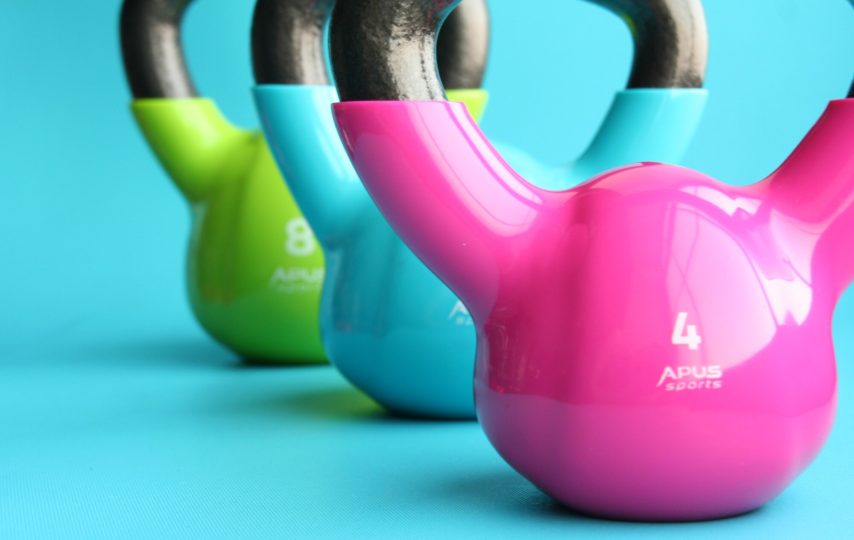Have you incorporated kettlebell training into your workout routine? If not, you’re missing a valuable (and inexpensive) tool to build more strength and experience many kettlebell training benefits!
You’ve seen them at the gym or sporting goods store before, but maybe you haven’t been sure that kettlebells can be an effective part of your weekly training sessions. They’re oddly shaped, but they offer an incredible variety of uses that can enhance your workouts.
No matter if you exercise to stay healthy or you train for specific sports, what are the benefits of kettlebells? Keep reading to learn about seven incredible perks of this fantastic piece of fitness equipment!
1. Improve Your Balance
One of the hallmarks of improving your strength and flexibility is building balance. Machine training isn’t a bad way to impress your fitness, but it can delay results if it’s the only equipment you use when working out.
When using machines, movements follow a predetermined path. While these movements produce force, your muscles aren’t required also to provide stability throughout your movements. This can limit the effectiveness of repetitive movements and minimize the strength you can build through machine work.
Adding kettlebell training into your workout rotation helps you build additional strength and balance through your core. When engaged in kettlebell exercises, you control the path of movement. To maintain proper form and execute each exercise safely, you must engage more muscles to stabilize movement.
Strong stabilizer muscles improve your overall strength and range of motion. This kind of strength boosts your balance, too!
2. Combine Cardio and Strength Training
You don’t have to run to get an excellent cardio workout! However, if you are a runner, kettlebell training should be part of your regular strength training. Using a kettlebell to strengthen your core and gluteal muscles helps give greater power to your running sessions.
Since many kettlebell exercises incorporate multiple movements, they’re an excellent way to get your heart rate up while building strength. Knock out an intense cardio and strength training workout when using your kettlebell for goblet squats, kettlebell swings, lunge presses, and Russian kettlebell twists.
3. Increase Range of Motion
You might be timid when first using a kettlebell, but you’ll soon enjoy how routine use can improve your range of motion. Incorporating kettlebell training into your weekly routines helps boost fluidity and flexibility throughout your motions.
Starting small and simple is an excellent way to get started with a kettlebell. As you continue exploring the many exercises, you’ll challenge yourself to go deeper or stretch a bit further as you build strength and confidence.
Isolation exercises limit their focus to one or two muscle groups. However, kettlebells help loosen your limbs with combination motions and incorporate more muscles to stabilize your body throughout each exercise.
With a healthy kettlebell training habit, you’ll notice smoother joint movement and deeper stretches during pre- and post-workout warm-up and cool-down sessions. When your ligaments and tendons benefit from improved elasticity, your joints also experience less swelling and inflammation.
4. Improve Your Posture
Do you slouch over a computer throughout the day? Sometimes slouching is a symptom of laziness. At other times, your body slouches because it lacks the strength and stability to hold itself in a position of better posture.
As you work through exercises like squats or deadlifts with your kettlebell, focus on standing tall and distributing your weight evenly on both feet. Follow through with a complete range of motion for every exercise while keeping your core tight.
Engaging your stabilizer muscles helps build strength in your core and back. As those muscles experience more strength through frequent use during kettlebell exercises, you’ll notice a natural improvement in your posture when you sit or stand.
5. It’s Simple
You don’t need complicated machines or a wide range of at-home equipment to get a complete workout. A kettlebell is inexpensive and straightforward to use. It’s also conducive to work with various exercises to change up your workout every time you pick it up.
If you workout at home, a variety of kettlebells should be part of your equipment—especially if you don’t have a large space to use as your home gym. Kettlebells don’t take up much space. With a few different weight sizes, you have everything you need to stay fit at home!
6. Reduce Your Workout Time
Burning more calories doesn’t require long, complicated workout sessions. With kettlebells, your body engages in compound movements that help you burn more calories in less time.
A power-packed 20-30 minutes of kettlebell exercises keep your heart rate up while incorporating powerful movements to build strength. If you’re looking for simple routines that burn more calories with less equipment and through shorter exercise sessions, add kettlebell workouts to your routine.
7. It’s Safe
Make sure you keep a good grip on your kettlebell when performing swing exercises and lifts. Other than the risk of letting go during an upward swing, kettlebell exercises are often a safer alternative to building strength than lifting heavy barbells for deadlifts or bench presses.
Even while extending your range of motion through kettlebell exercises, engaging more stabilizer muscles helps reduce the potential for injury compared to the static motions of lifting heavy weights. Plus, kettlebell exercises put less pressure on your spine while delivering an effective workout that improves your cardio and strength at the same time.
Using kettlebells can help you lift weights more effectively. If you love heavy weight sessions at the gym, trade off a few days to improve your core strength through kettlebell exercises. You’ll notice an improvement in your lifting form and protect yourself with more overall strength when doing those heavy lifts!
Enjoy the Benefits of Kettlebells!
It’s easy to enjoy the benefits of kettlebells! You don’t even need a gym membership. Start with kettlebell weights that you can manage to learn the exercise and build some strength, then graduate to heavier sizes as you progress.
If this article was helpful, we hope you’ll explore more of our blogs!













